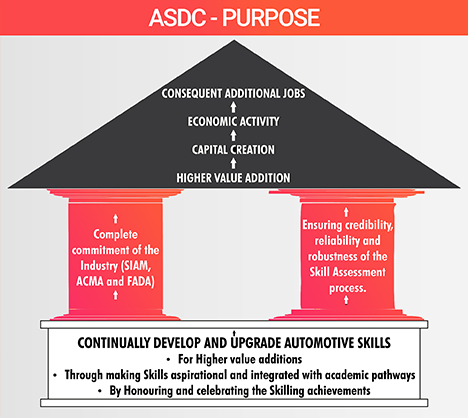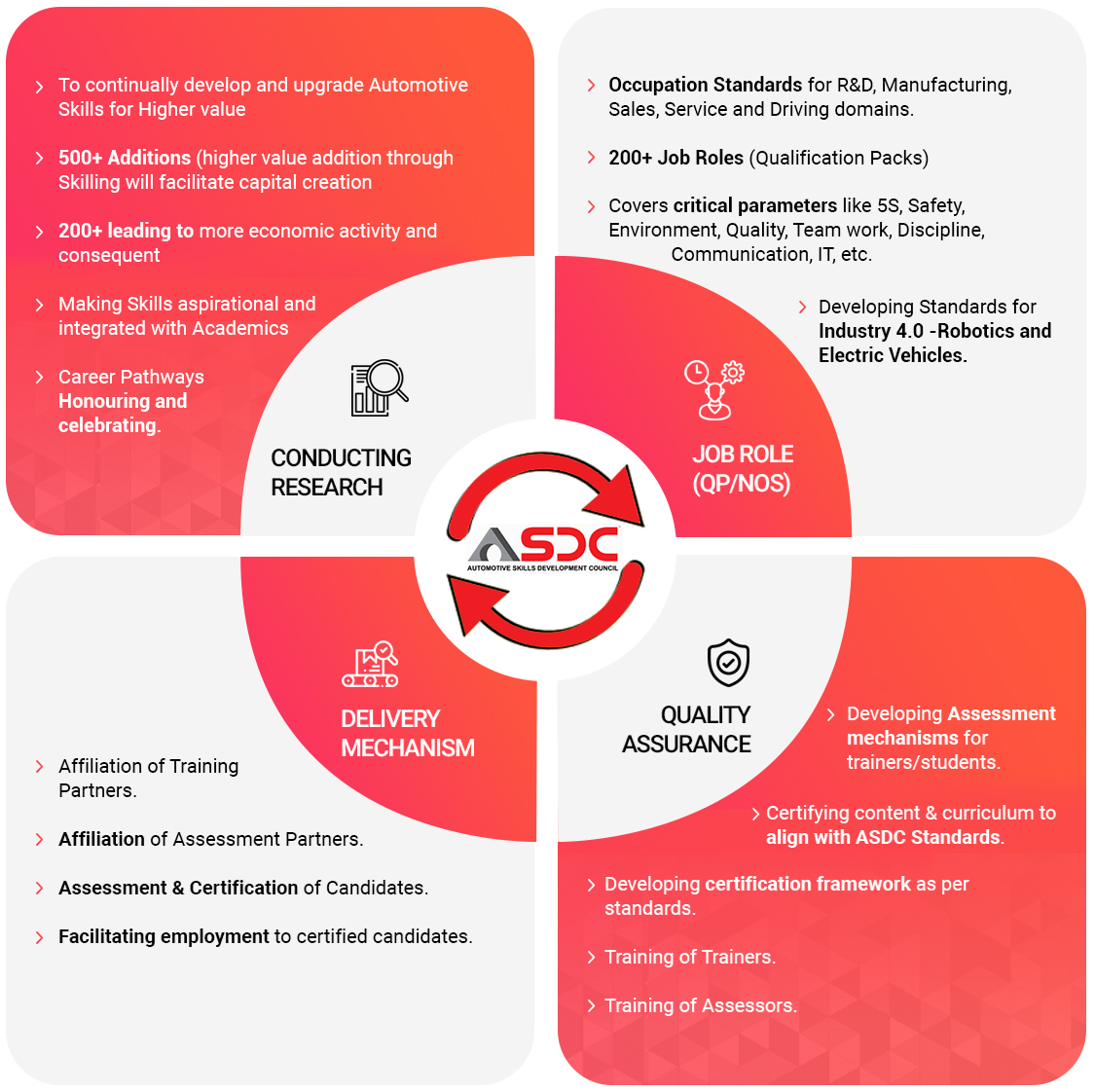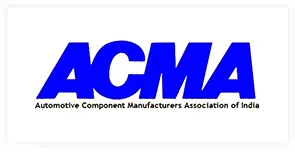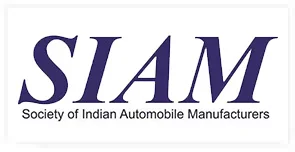About ASDC
The automotive industry in India is undergoing a transformation because of its sustained growth and profitability. Indian Automotive industry currently accounts for 7.1% of GDP and 49% of manufacturing output, generating 32 million direct or indirect employment. Based on the Automotive Mission Plan 2019-2026, which is a collective vision of the Government of India and the Indian Automotive Industry, the sector is expected to employ 36 million people by 2026. The Automotive Industry is known to be highly dynamic with ceaseless innovations pouring in from all over the world, changing the face of the industry as we know it.
To cope up with such a transformation, constant skilling, re-skilling and up-skilling of the existing and future workforce is extremely important. The new jobs, however, are likely to move away from traditional manufacturing and instead be added in the areas of IoT, mechatronics, robotics, 3D printing, AI, machine and deep learning, analytics, virtual collaboration, automotive design, and computational thinking.
Currently, there is a mismatch in certain areas between the skills that the industry requires and those possessed by the youth in our country. Hence, the Indian automotive sector may face a huge void if the structured reforms and initiatives are not taken to bridge the demand supply mismatch for the skilled workforce.
One of the key aspects of skilling which needs to be well understood and achieved is what level of skills, how practiced can add value to the person and the business, so as to create capital and more jobs. Developed economies of Germany, Switzerland, Japan, South Korea, etc. are shining example of this.








